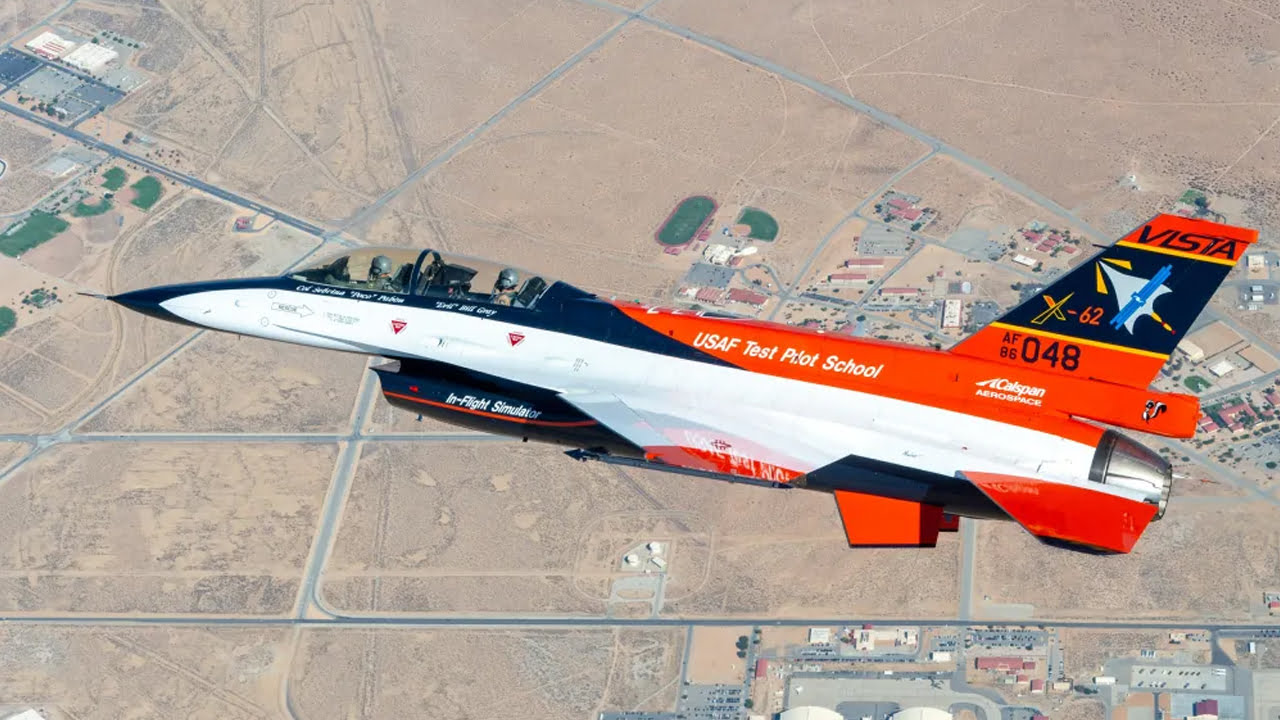US Air Force Secretary Frank Kendall participated in an experimental flight aboard an AI-controlled F-16, named Vista, at Edwards Air Force Base in California. The jet, painted in vibrant orange and white, performed complex aerial manoeuvres, demonstrating capabilities that surpassed traditional pilot-led operations. The trial flight included close encounters with a human-piloted F-16, showcasing advanced AI’s potential in air-to-air combat scenarios.
AI Advancements in Military Strategy
This jet marks a pivotal development in military technology, with AI seen as one of the most significant advancements since the introduction of stealth technology. The Air Force has announced ambitious plans to incorporate over 1,000 AI-enabled unmanned warplanes into their fleet by 2028, highlighting a strategic shift towards automated warfare systems that reduce risks to pilot lives and potentially lower the costs of aircraft production.
Security and Ethical Implications
The use of AI in military applications raises substantial security and ethical questions. Secretary Kendall emphasized the necessity of integrating AI technologies, stating that it represents a critical security asset. However, this stance is met with opposition from arms control advocates and humanitarian organizations, who express grave concerns over the prospect of AI systems making autonomous lethal decisions. The International Committee of the Red Cross has particularly called for urgent international dialogue to address these risks.
Global Context and Strategic Necessity
The AI-driven shift is not merely a technological upgrade but also a strategic imperative. With potential adversaries like China rapidly expanding their unmanned weaponry capabilities, the U.S. Air Force is pressed to maintain a competitive edge. AI-enabled aircraft could lead assaults on enemy defences, enabling safer operations for human pilots and providing strategic advantages in electronic warfare and air defence engagements.
Operational and Development Insights
Vista’s development process involves a cyclical training regime where AI algorithms learn from millions of data points in simulations before applying these learnings in real-world tests. This method helps refine AI responses based on actual flight data, significantly enhancing the AI’s decision-making capabilities. According to the program’s test pilots, some AI systems are already outperforming human pilots in simulations, underscoring the rapid advancement and potential of AI in combat scenarios.
Future of AI in Air Combat
The ongoing development and testing of AI-controlled jets like Vista are crucial in shaping future military strategies and technologies. As AI continues to evolve, the role of human pilots may diminish, transitioning to a new era where AI plays a central role in operational tactics and engagements.












